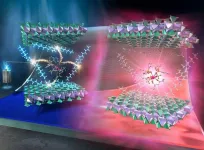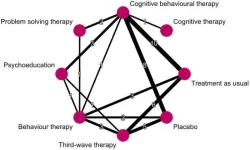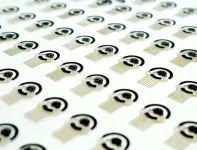The world of display technology is on the cusp of a transformative breakthrough, with electrochemical stimuli-responsive materials gaining more attraction. Based on external stimuli, such as low voltage, these materials can instantaneously undergo electrochemical reactions. These electrochemical reactions can result in the production of different colors, revolutionizing the age of display solutions. An electrochemical system consists of electrodes and electrolytes. Combining the luminescent and coloration molecules on the electrodes instead of the electrolyte can offer higher efficiencies and stability for display devices.
To this end, a research team from Japan employed clay membranes to effectively integrate the coloration and luminescence molecules. This study was led by Professors Norihisa Kobayashi and Kazuki Nakamura, and co-authored by Ms. Rong Cao and Mr. Naoto Kobayashi, all from the Graduate School of Science and Engineering, Chiba University, Japan. Their innovative dual-mode electrochemical device merges the ability to emit light and change color, offering a highly adaptable and energy-efficient solution for modern displays. Published in the Journal of Materials Chemistry C on 18 November 2024, this study highlights the unique potential of combining advanced materials science with practical display applications.
"Our approach introduces a game-changing concept in dual-mode display design by uniting luminescence and coloration within a single device. This advancement not only enhances performance but also expands the versatility of displays across diverse environments," says Prof. Kobayashi. The device leverages a layered clay compound called smectite, renowned for its ion exchange capacity and strong adsorption properties. This clay matrix is used to stabilize and enhance the performance of two key components: europium(III) (or Eu(III)) complexes, which provide vibrant luminescence, and heptyl viologen (HV2+) derivatives, which enable striking color changes. Together, these materials create a hybrid solution that supports synchronized electrochemical modulation of light and color.
The team combined Eu(III), hexafluoroacetylacetone (hfa-H2), and triphenylphosphine oxide (TPPO) to create a complex. They then constructed the device by applying hybrid films of smectite, HV2+, and Eu(hfa)3(TPPO)2 onto indium tin oxide (ITO) electrodes. These films exhibited dynamic optical properties when a voltage was applied. Specifically, the HV2+ molecules produced a vivid cyan coloration upon electrochemical reactions, while the luminescence from the Eu(III) complex was quenched, demonstrating precise control over both functions.
This innovative integration of materials is not only scientifically significant but also environmentally beneficial. By reducing energy consumption and utilizing low-voltage operations, the device addresses growing concerns about sustainability in electronic devices. Furthermore, the use of naturally abundant clay compounds offers an eco-friendly alternative to synthetic materials often used in similar applications.
Experimental results showed that the dual-mode functionality operates seamlessly under different environmental conditions. The study also provided insights into the interactions between the clay matrix and the embedded molecules, revealing how the structural properties of the clay contribute to enhanced performance. The researchers noted that the interlayer spacing in the clay facilitated better electron movement, enabling faster and more efficient reactions.
"This technology bridges the gap between energy-efficient reflective displays and high-visibility emissive screens. Its adaptability to different lighting conditions makes it an ideal solution for various applications, from digital signage to portable devices," explains Prof. Nakamura about the applications of these devices. The study's results are compelling. Applying a −2.0 V bias voltage resulted in efficient energy transfer between the luminescent and color-active states, leading to clear optical changes. This dual-mode performance is achieved through mechanisms such as fluorescence resonance energy transfer and the inner filter effect, which ensure effective interaction between the components.
Potential applications for this device are vast. It could pave the way for innovative, energy-efficient displays that remain highly visible in both bright and dark environments. For example, reflective tablets and digital signage could benefit significantly from this technology, addressing challenges such as poor visibility in sunlight or high-power consumption in emissive screens. Looking ahead, the team plans to expand the functionality of their device by incorporating additional materials, potentially enhancing its versatility, and opening doors to new commercial applications. "Our ultimate goal is to design display technologies that are not only more sustainable but also more versatile,” notes Prof. Kobayashi.
About Professors Norihisa Kobayashi and Kazuki Nakamura
Professor Norihisa Kobayashi is a distinguished faculty member of the Graduate School of Sciences and Engineering at Chiba University, Japan. His expertise includes photoelectric functional polymer materials, polymer chemistry, functional imaging materials, charge (electron/ion) conductive polymers, electrochemistry, and photochemistry. His research focuses on the fabrication of photoelectric functional nano-hybrid materials and their application to imaging devices, and the development of novel imaging media using electrochemical reactions. He has published over 250 articles with more than 10,000 reads and 3,500 citations.
Professor Kazuki Nakamura is an esteemed faculty of the Graduate School of Engineering at Chiba University, Japan. His work focuses on the development of innovative materials for novel photofunctional devices, with a strong emphasis on electrochemical and photophysical systems. His skills and expertise include those in the areas of luminescent lanthanide complexes, organic functional materials, photophysical analysis, and electrochemical analysis. His work spans over 150 publications, with more than 10,000 reads and 2,500 citations.
END






